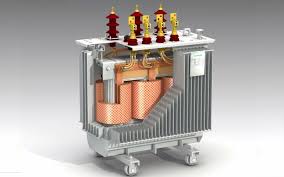MARKET OVERVIEW:
Global Electrical Transformer market is estimated to reach $59,910.7 Million by 2031; growing at a CAGR of 7.8% from 2024 to 2031.
The global electrical transformer market is a highly dynamic sector within the electrical equipment industry, focusing on the manufacturing, supply, and maintenance of devices that transfer electricity at varying voltage levels. These transformers play a crucial role in modern infrastructure by enabling the safe and reliable distribution of power from generation plants to end-users. Recent advancements in technology have led to significant improvements in transformer design, resulting in reduced physical size, enhanced energy efficiency, and the ability to handle variable loads while maintaining reliability. As countries worldwide invest in upgrading their electrical grids to support renewable energy sources and accommodate urbanization, the demand for electrical transformers is expected to rise. Smart technologies are increasingly being integrated into transformers, allowing for real-time data sharing on performance metrics to enhance maintenance practices and grid stability. Sustainability is also a key focus, with manufacturers working on environmentally-friendly transformers to minimize energy losses and reduce greenhouse gas emissions in compliance with stringent environmental regulations and customer preferences. Growth opportunities are particularly promising in Asia Pacific, notably in countries like China and India, due to rapid industrialization and urban expansion driving the need for reliable electricity infrastructure. North America and Europe are also significant markets investing in grid modernization and renewable energy integration. The future of the electrical transformer market will continue to evolve to meet changing energy requirements and regulatory standards globally, emphasizing efficiency, reliability, and sustainability through digital technologies for optimized performance and operational insights. Collaboration across the value chain, involving utilities, regulators, and technology providers, will be essential in driving innovation and adaptation to create a more sustainable and interconnected energy landscape. As electricity demands escalate worldwide, the evolving electrical transformers will play a crucial role in ensuring the efficient delivery of power and seamless integration with renewable energy sources within the grid.

GROWTH FACTORS
The global electrical transformer market is experiencing significant growth driven by several key factors. One of the primary drivers is the increasing global demand for electricity, fueled by industrialization and urbanization in various regions. As cities expand and industries grow, the need for reliable and efficient power transmission and distribution systems becomes crucial, with electrical transformers playing a vital role in stepping up or stepping down voltage levels for effective power distribution. Additionally, the rising adoption of renewable energy sources like wind and solar power is contributing to market growth, as transformers are essential for transmitting electricity generated from renewables to the grid. Despite these positive trends, challenges such as limited raw material availability and fluctuating prices, along with regulatory complexities, pose obstacles to market expansion. Looking ahead, advancements in smart transformer technology are expected to further propel market growth by enabling remote monitoring, predictive maintenance, and energy optimization, enhancing reliability and efficiency in energy distribution networks. Despite these challenges, the global electrical transformer market is poised for continued growth, driven by increasing electricity demand, renewable energy adoption, and smart technology advancements to meet the evolving needs of modern energy infrastructures worldwide.

MARKET SEGMENTATION
By Core
The global market for electrical transformers is constantly evolving, particularly in the key segments of closed, shell, and berry types. These advancements in transformer technology cater to the diverse needs of industries and businesses in efficiently managing energy consumption. Closed-core transformers, characterized by a solid magnetic circuit surrounding the core windings, play a crucial role in power distribution. Their robust design and high voltage capabilities result in minimal energy loss during transmission, enhancing overall efficiency in electrical grids and industrial operations. These transformers are reliable and essential components in modern power systems, offering versatility in capacity adjustments to meet varying load demands. Similarly, shell-core transformers feature an external magnetic circuit surrounding the core windings, making maintenance easier and enabling their application in both urban and rural electrification projects worldwide. Lastly, the compact Berry-core transformers, known for their small size and efficient magnetic coupling, have found widespread use in renewable energy integration and smart grid initiatives. Their innovative design optimizes space utilization without compromising performance, making them ideal for urban environments where space constraints are a concern. Overall, these transformer types contribute significantly to enhancing grid resilience and supporting the transition towards a more sustainable energy mix.
By Insulation
The global electrical transformer market is evolving rapidly, with various types of insulation playing a critical role in this growth. Electrical transformers are essential components in the transmission and distribution of electrical energy, adjusting voltage levels as needed. As technology advances, the demand for more efficient and reliable transformers is on the rise.
One key aspect impacting transformer performance and lifespan is the type of insulation utilized. Gas-insulated transformers, known for their compact design and high reliability, are increasingly favored in urban areas where space is limited. Oil-insulated transformers, historically known for their durability and high voltage capacity, are facing environmental concerns related to oil spills, prompting the exploration of alternative options. Solid insulation, with its strong dielectric properties and mechanical strength, is gaining popularity in medium- and high-voltage transformers, showing promise for future research and development. Air-insulated transformers, appreciated for their simplicity and low maintenance requirements, are being improved with technological advancements to enhance efficiency and reliability, positioning them as a primary choice in various applications. New materials and hybrid solutions are also being studied to address specific challenges in the electrical transformer market, paving the way for innovative insulation technologies with improved performance and eco-friendly features in the near future.
By Phase
The global electrical transformer market is experiencing significant growth driven by rapid industrialization and urbanization, with one of the major trends being the increasing demand for electricity. Electrical transformers play a crucial role in power distribution networks by transferring electrical energy between primary and secondary circuits through electromagnetic induction. As the world shifts towards cleaner and more efficient energy systems, the demand for reliable and efficient transformers is expected to rise. The market has been segmented based on phase into single-phase and three-phase transformers, with single-phase transformers mainly used in residential and smaller commercial applications, while three-phase transformers are more complex and applied in industries and high-load uses.
There is a growing demand for electrical transformers due to their effectiveness in handling high power loads and delivering power consistently. Future developments in technology and the focus on renewable energy sources are expected to impact the market significantly. Innovations in materials and designs are making transformers more efficient and durable, reducing energy losses and improving overall performance. The integration of smart transformers with digital monitoring and control systems is gaining traction, offering better reliability and operational efficiency through real-time monitoring and predictive maintenance, ultimately reducing operational costs and minimizing downtime.
As the demand for electricity continues to rise and technological advancements drive innovation, the global electrical transformer market is poised for rapid growth. These devices are essential in enabling efficient transmission and distribution of electrical energy, adjusting voltage levels to facilitate long-distance transmission with minimal losses. Factors such as rapid urbanization, increasing global population, and the growing demand for renewable energy sources are expected to drive the market forward. Countries worldwide are investing in upgrading their power infrastructure to meet the rising energy demand. With the integration of smart grids and renewable energy sources like solar and wind, there is a growing need for advanced transformers capable of supporting variable loads while ensuring a stable power supply. Different rating categories within the market cater to various applications, with transformers ranging from 100 MVA to 500 MVA serving smaller industrial and commercial needs, those rated between 501 MVA and 800 MVA supporting larger industrial plants and commercial zones, and transformers rated between 801 MVA and 1200 MVA used in large power generation and transmission projects. The continuous trend of industrial automation and development of smart cities is expected to further boost demand for these transformers across different sectors.
REGIONAL ANALYSIS
The global electrical transformer market is experiencing robust growth driven by rapid technological advancements and increasing electricity demand worldwide. Key regions such as North America, Europe, Asia-Pacific, South America, and the Middle East & Africa are playing significant roles in shaping the future of this market. In North America, countries like the U.S., Canada, and Mexico are witnessing high growth rates due to the shift towards renewable energy sources and the modernization of existing electrical infrastructure. Europe, including countries like the UK, Germany, France, and Italy, is focusing on reducing carbon emissions and enhancing energy efficiency, leading to substantial investments in renewable energy projects and grid modernization. The Asia-Pacific region, with major markets like China and India, is experiencing rapid growth driven by urbanization, industrialization, and increasing electricity demand. South America and the Middle East & Africa are also contributing to market growth through investments in renewable energy projects and grid upgrades. As each region continues to develop its electrical infrastructure, the global electrical transformer market is poised for significant expansion, driven by technological advancements and the growing emphasis on renewable energy sources.

KEY INDUSTRY PLAYERS
The global electrical transformer market is poised for significant growth in the upcoming years, fueled by the rising demand for electricity and advancements in technology. Electrical transformers play a crucial role in power distribution systems by stepping down high voltage electricity to levels suitable for residential and commercial use. This growth is further supported by the ongoing processes of urbanization and industrialization worldwide. Key industry players like Siemens Energy, Alstom, General Electric, and Hyundai Heavy Industries are pivotal in shaping the future of the electrical transformer industry. These leaders prioritize efficiency and reliability, investing heavily in research and development to introduce innovative technologies. Additionally, companies such as Layer Electronics, MACE, SPX Transformer, and Toshiba International Corporation contribute to industry progress by focusing on creating transformers that can handle higher loads and operate more efficiently. As the market evolves, other players like XD Group, TBEA, Mitsubishi Electric Corporation, and LS Industrial bring their unique strengths to the forefront, catering to diverse market needs. The industry also benefits from the contributions of companies like Celme S.r.l., Hyosung Heavy Industries, DAIHEN Corporation, and Kirloskar Electric Company, each playing a crucial role in serving various industrial, residential, and commercial requirements. In this competitive landscape, companies such as Raychem RPG Private Limited and MEHRU, though smaller in scale, find success in niche markets with specialized products. Agility and responsiveness to market changes are vital for these companies to thrive and offer tailored solutions. The future of the global electrical transformer market looks promising, with continuous product innovation driving growth in demand. Industry leaders like Siemens Energy and General Electric lead the way in technological advancements, while companies like Hyosung Heavy Industries and Layer Electronics ensure diversity and competition in the market. This collective effort holds great potential for more efficient and sustainable electrical solutions worldwide.
REPORT SCOPE AND SEGMENTATION
|
Attributes |
Details |
|
Market Size By 2031 |
USD 59,910 Million |
|
Growth Rate |
CAGR of 7.8% |
|
Forecast period |
2024 - 2031 |
|
Report Pages |
250+ |
|
By Core |
|
|
By Insulation |
|
|
By Phase |
|
|
By Rating |
|
|
By Region |
|
|
Key Market Players |
|



_page-000152.jpg)
_page-000155.jpg)
_page-000154.jpg)
_page-000153.jpg)


6.jpg)



 APAC:+91 7666513636
APAC:+91 7666513636





